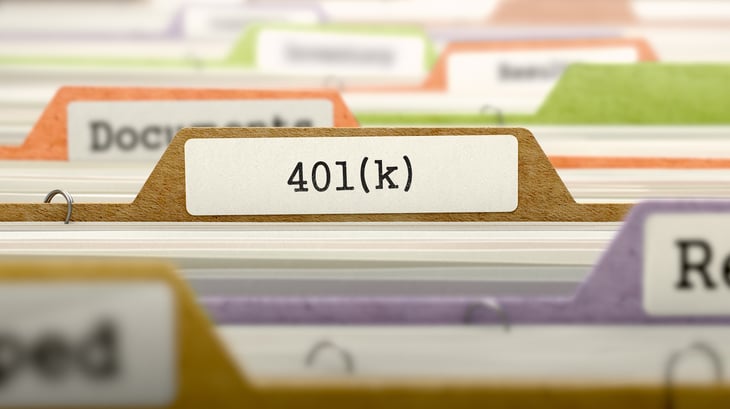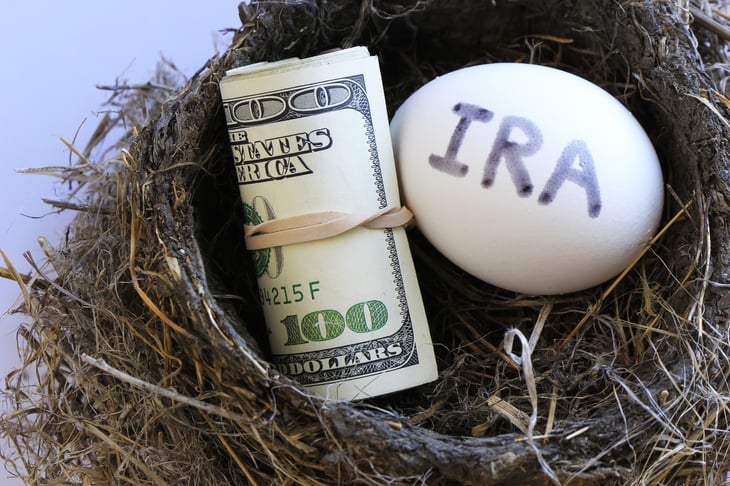
Editor's Note: This story originally appeared on SmartAsset.com.
Being self-employed has a multitude of benefits. While you can be your own boss and enjoy the flexibility and agency that comes along with this style of employment, there are certain things that aren’t as readily available.
This includes employer-sponsored health care and 401(k) matching programs. This lack of structured benefits has the potential to make saving for retirement more difficult for entrepreneurs.
However, those who choose to be self-employed actually have a number of solid retirement savings options. A financial adviser can also help you pick a retirement plan for your needs and goals.
Following is a look at the best retirement plans for the self-employed.
Overview of the Best Retirement Plans for Self-Employed People

Saving for retirement when you’re self-employed can be tougher for a number of reasons. Self-employed individuals typically don’t have steady streams of income like those with more traditional employment.
Health care and education expenses can also pile up when not under the coverage of a traditional employer. Plus, the costs of running a business can eat into your take-home pay.
With no human resources person to get you involved in workplace retirement plans, no matching programs and no automatic contributions, saving for retirement can easily become an afterthought.
However, being self-employed is becoming increasingly popular in the U.S. and around the world. What’s more, a sizable percentage of those who are self-employed don’t save regularly for retirement.
But while it’s true these people don’t have all of the same retirement savings options as the average employee, there are still plenty of plans you can use to save. Such plans include solo 401(k)s, SIMPLE IRAs, SEP IRAs and Keogh plans.
Solo 401(k)s

One of the most popular retirement plans for self-employed people is called a solo 401(k). The IRS actually refers to these as one-participant 401(k)s, though.
The popularity of these accounts stems partly from the fact that it closely mirrors the types of 401(k) plans offered by employers that many are familiar with.
A solo 401(k) is reserved for sole proprietors who have no other employees. The exception to that rule is if the sole proprietor has a spouse who works in the business as well.
One of the top benefits of a solo 401(k) plan is that you can contribute as the employer and the employee, effectively doubling the contribution amount each year.
As is the case with a 401(k), total contributions cannot exceed $19,500 for 2021. For those 50 years old or older, $6,500 in catch-up contributions can also be made. The pre-tax benefits are identical to a normal, employer-sponsored 401(k) as well.
SEP IRAs

SEP IRAs are offered in contrast to 401(k) plans like the one above. While a 401(k) involves employer and employee contributions, SEP IRAs involve savings that come from the employer only.
A SEP IRA is quite easy to set up and manage, and you can contribute up to 25% of your compensation, up to $58,000 for 2021.
There isn’t an annual funding requirement for a SEP IRA. You can also choose to make contributions regularly throughout the year or make a lump-sum deposit at some point during the year.
While the plan is best for sole proprietors, you can still use a SEP IRA as an employer of multiple employees. However, in that case, you’ll need to contribute to all eligible employees based on their first $290,000 of compensation annually.
SIMPLE IRAs

A SIMPLE (Savings Incentive Match Plan for Employees) IRA functions differently than a 401(k), as it also falls under the IRA umbrella.
That said, it can be thought of as a mix between an IRA and a 401(k), as suggested by the fact that it involves matching contributions. You can use a SIMPLE IRA if you’re a sole proprietor, but it works even better for small businesses.
A SIMPLE IRA follows the same rules as a SEP IRA when it comes to rollovers, distributions, investments and other details. However, contribution thresholds are lower.
Specifically, they’re $13,500 in 2021 with a $3,000 excess allowed if you’re age 50 or older. As an employer, you’re obligated to match up to 3% of each employee’s contributions or 2% of each employee’s salary, for contributors and non-contributors.
Keogh Plans

A Keogh plan isn’t as well known as its IRA and 401(k) counterparts when it comes to saving for retirement as a self-employed individual.
It’s more complicated to set up than the other options, though it comes with the added benefit of more potential growth. Keogh plans are also known as profit-sharing plans.
Total contributions to a Keogh plan in 2021 are limited to $58,000 if the plan is a defined contribution plan. If it’s structured as a defined benefit plan, you can save even more.
The cap for defined benefit Keogh plans is set at $230,000 for 2021 or 100% of the employee’s compensation.
Contributions to a Keogh plan are made on a pre-tax basis, as is the case with many retirement plans. Remember, though, that a Keogh plan is complex to arrange and requires more paperwork than average.
Which Self-Employed Retirement Plan Should You Use?

When it comes to determining which retirement plan you should use as a self-employed individual, it’s important to remember that no two people are alike. In other words, you should ultimately make your decision based on your specific financial situation. That said, there are guidelines that can help make your decision easier.
If you’re a sole proprietor and are interested in a simple way of saving for retirement, it’s probably best to look at either a solo 401(k) or SEP IRA. Both of these plans are designed with sole proprietors in mind and are easy to set up and maintain, while maximizing savings.
If you’re self-employed and run a small business, it’s probably a good idea to use a SIMPLE IRA. You won’t need to do as much paperwork to set one up as you would with a Keogh plan, and you’ll be able to maximize the retirement savings of your employees, as well as yourself.
But let’s say you’re running a small business and want to make sure you and your employees can contribute high sums to retirement every year. In this case, a Keogh plan may be the way to go. Just remember that these are much more complicated to set up.
Bottom Line

Saving for retirement when you’re self-employed can often be an uphill battle, and statistics show that too many self-employed individuals forgo saving for retirement altogether. But it doesn’t have to be that way.
There are several solid retirement savings options out there for the self-employed, whether you’re a sole proprietor or a small business owner with multiple employees.
SEP IRAs, SIMPLE IRAs, solo 401(k)s and Keogh plans are some of the best, so make sure you know what makes sense given your financial situation before you make any final decisions.





Add a Comment
Our Policy: We welcome relevant and respectful comments in order to foster healthy and informative discussions. All other comments may be removed. Comments with links are automatically held for moderation.